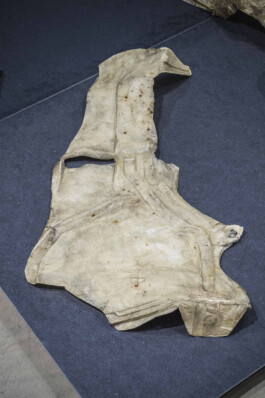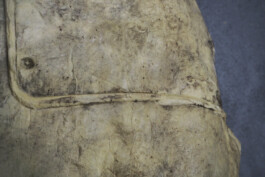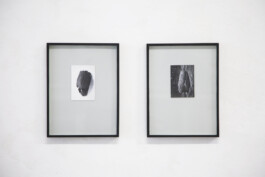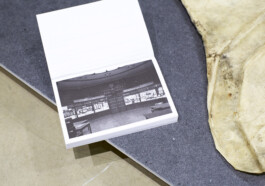Hotel Culny







Lethaby Gallery
London (UK)
curated by the Warburg Institute
2018
For many centuries paper has been the primary carrier of metadata. Books, maps and money are the obvious examples of how paper has enabled us to gather stories, to collate, cascade, organise, store and — crucially — to transmit information across the world, across the centuries. It is the very material qualities of paper — its lightness, flexibility, relative affordability and durability — that have allowed it to become such an enduring vehicle for recording and transporting metadata. [... ]. Only in 2017, the House of Lords agreed to record new UK laws on paper instead of the traditional parchment that had been in use since 1497. It may seem anachronistic, but illustrates that in our digital age paper has acquired an even more auratic quality, guaranteeing the stability of what it records. While digital standards of conversion are not yet universally agreed, paper is still perceived as the ultimate failsafe. Despite this, paper is frequently the material of choice not because of its stability, but because of its mutability, another property that makes it an ideal transmitter of information. As such the material had a true renaissance in nineteenth-century archaeology. Thus paper was even used to copy the facades of monuments that were considered far away and foreign — Persepolis in ran, Palenque in Mexico and the Alhambra in Spain, for example. Archaeologists Like Alfred Maudslay exploited its material qualities in the paper mould technique. This method uses Layers of wet paper to create a negative impression of the surface of a building or object, from which a positive could be cast in plaster.
Paper moulding enabled an imprint of a monument to be brought with all its details back to the museum, in the age before both digital. reproduction and cheap and reliable photography.
A French archaeologist Lottin de Laval had written and published a pocket- sized guide to the technique, “Manuel de Lottino plastique”, to be used by the amateur explorer, with the idea that anyone could copy details of buildings and make reproductions for their home. Maudslay’s application of the technique is testament to its success. These paper moulds were cheap to make and very light and easy to transport to Europe. The casts made from them were used to study the artefacts, for d”isplay and teaching, as well as to reconstruct entire monuments from what were considered “exotic” places. The British
Museum has a rare collection of these original paper moulds and their plaster casts made by Maudslay from the Mayan monuments of Guatemala and Mexico [... ]. These paper moulds were never meant to endure, they were ephemeral transmitters... However, the moulds together with the plaster casts made from them bear the physical imprints of the objects they touched, transmitting not only the shapes of the monuments but also their flaws, traces of their makers and the places where they were made. In some cases, they carry the metadata for monuments that in their original form have deteriorated and become illegible. Today, practitioners of Digital Humanities use metadata sources like these to construct digital versions of the original built structures. This technique is not only of interest for researchers but also for contemporary artists, such as Nicola Lorini. His work investigates how objects and narratives from the past travel and mutate their conditions. In Hotèl Culny, he has adapted the paper mould technique of Lottinoplastique to instigate a dialogue between material production and the interpretation rand transmission of information through paper. The paper mould technique also informs the subject matter of his work: his ephemeral sculptures are taken, not from ancient monuments, but from the vans used by museums for art transport.
(written by the the Bilderfahrzeuge project, Warburg Institute, for the catalogue of Metadata, How We Relate to Images, Lethaby Gallery)
materials: tissue paper, linseed oil, flour, animal bone glue, archival inkjet print on Hahnemühle FineArt paper, artist's frame.